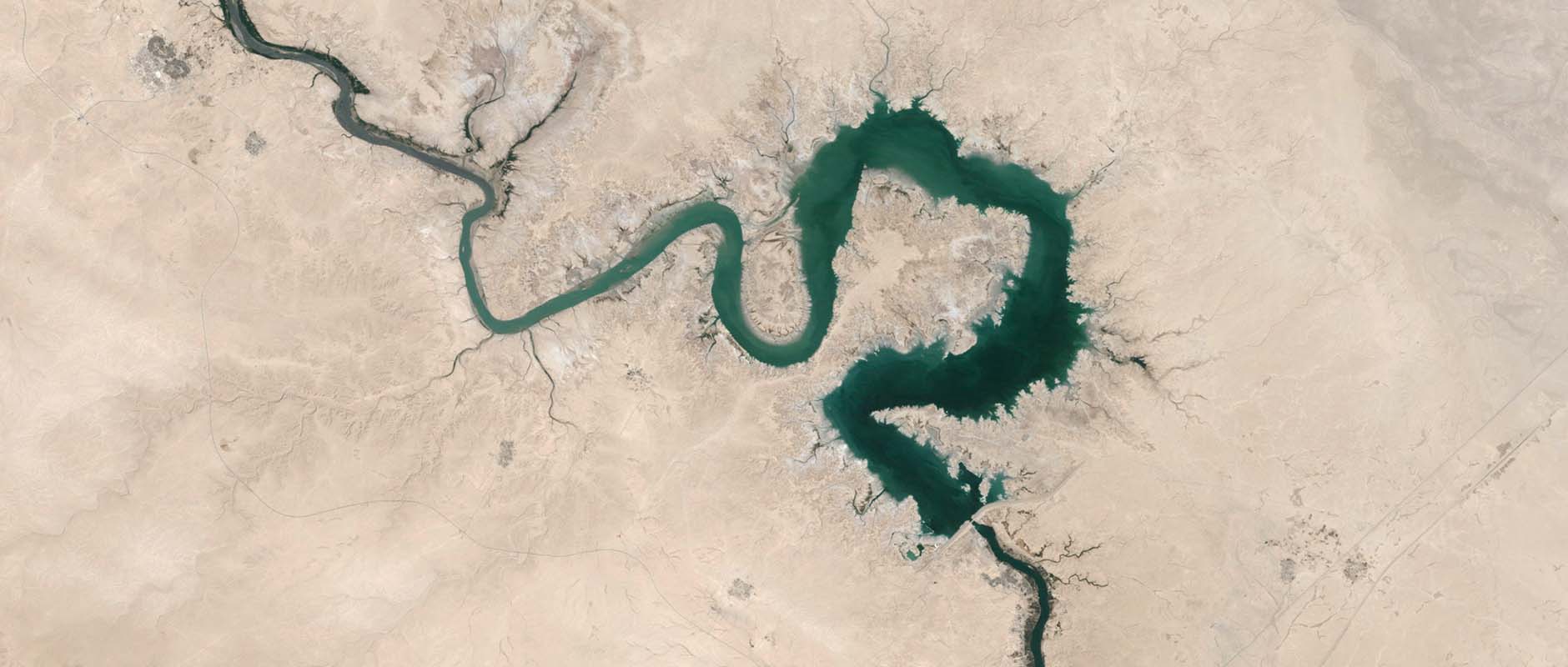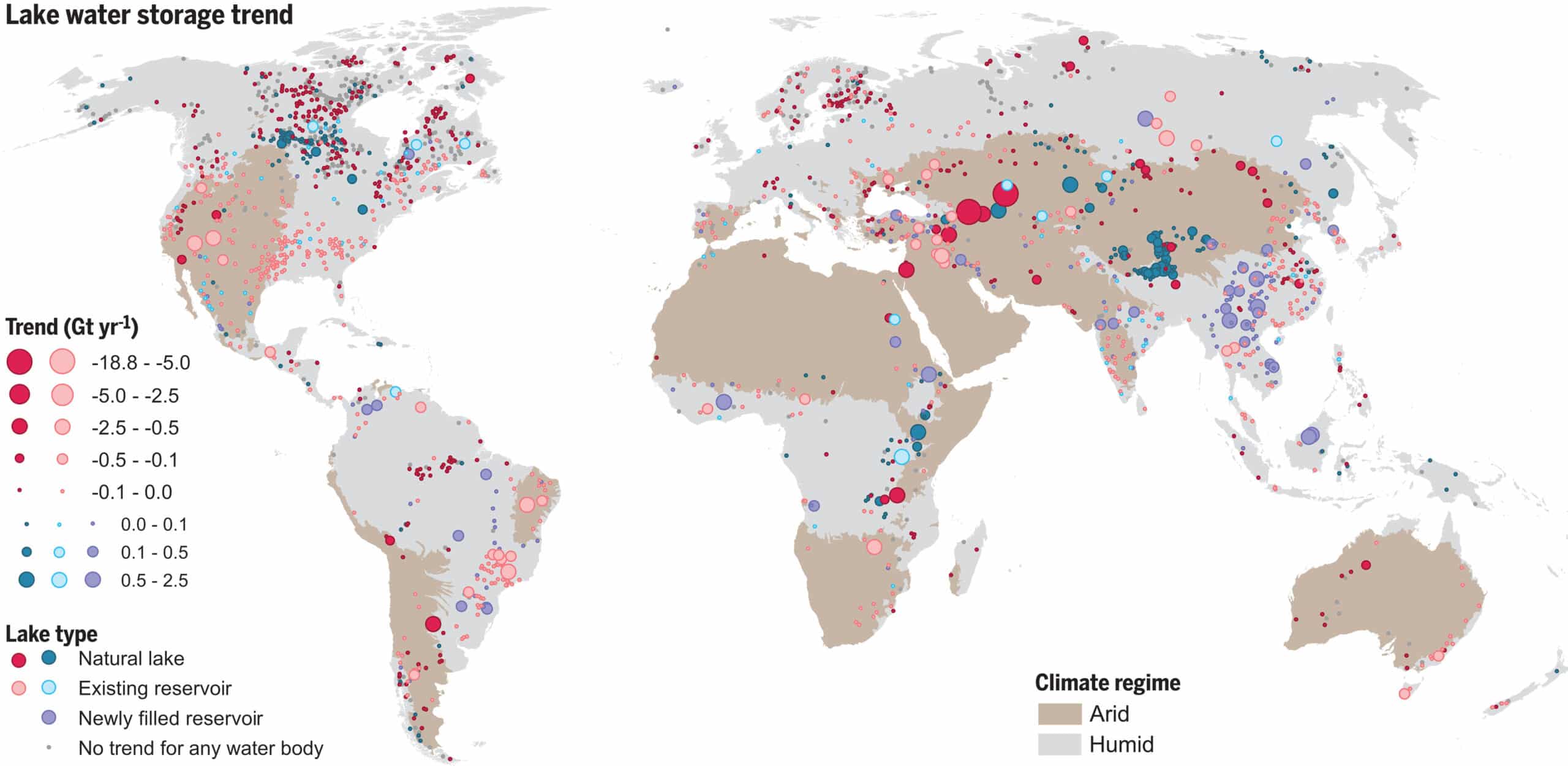The world’s large lakes, life-sustaining vaults of fresh water, are disappearing at an alarming rate, as disclosed in a groundbreaking study led by Yao et al. This scientific deep-dive unveils an uncomfortable truth: in the last three decades, the volume of more than half of the world’s natural lakes and artificial reservoirs has declined significantly.
The drying trends
Harnessing satellite observations, climate data, and intricate hydrologic models, the researchers meticulously scanned 1,972 of the world’s largest lakes. Their revolutionary study uncovers that a staggering 53% of these water bodies have shown considerable storage shrinkage from 1992 to 2020. This critical depletion, reaching nearly a quarter of the globe’s population, is seen in basins of drying lakes.
This decreasing trend is fueled by a potent cocktail of climate-induced and human-made factors. Natural lakes suffer primarily from a warming climate, which elevates evaporation demand, and human water consumption. Meanwhile, reservoirs grapple with significant storage losses owing to sedimentation.
More than 80% of the decline traces back to the 26 largest water losses. The Caspian Sea, the titan among inland waters, single-handedly accounts for 49% of the total decline and an astounding 71% of the net shrinkage in natural lake volume.
Source: Science – Satellites reveal widespread decline in global lake water storage
The minor growth
Certain regions, like the Tibetan Plateau, experience an intriguing paradox of climate change—increased lake storage, fueled by the retreat of glaciers and thawing permafrost. Areas predicted to receive more rainfall due to global warming, such as the Upper Mississippi River Basin, might also harbor potential reservoirs.
However, using longer-term satellite data, the study disproves the myth of global lake expansion. It sheds light on an unsettling truth, which is that there has been a decline in lake water storage (LWS) across the humid tropics all the way up to the high latitudes over the past three decades. These data highlight how essential it is to perform long-term monitoring in order for precise trend forecasting.
2 billion people at risk
The crisis unfolding in our drying lakes isn’t just environmental—it’s strikingly human. As of 2023, a whopping 2.0 billion people—one-fourth of the world’s inhabitants—live in basins staring at significant water losses. These lakes and reservoirs, the lifelines of local populations, are feeling the heat.
The study links a significant net loss of natural lake volume (56 ± 9%) to human activities, rising temperatures, and increased potential evapotranspiration (PET). Revitalizing these parched lakes calls for substantial management endeavors. The triumphant recovery of Lake Sevan in Armenia, following the enforcement of robust water protection laws, provides a beacon of hope.
Future of freshwater
This study’s consequences go beyond academia. It emphasizes the critical need for innovative water management strategies, as well as an increased understanding of the effects of climate change and sedimentation concerns. As guardians of our planet, it is our responsibility to put an end to these harmful trends and ensure the long-term sustainability of our precious freshwater resources.

